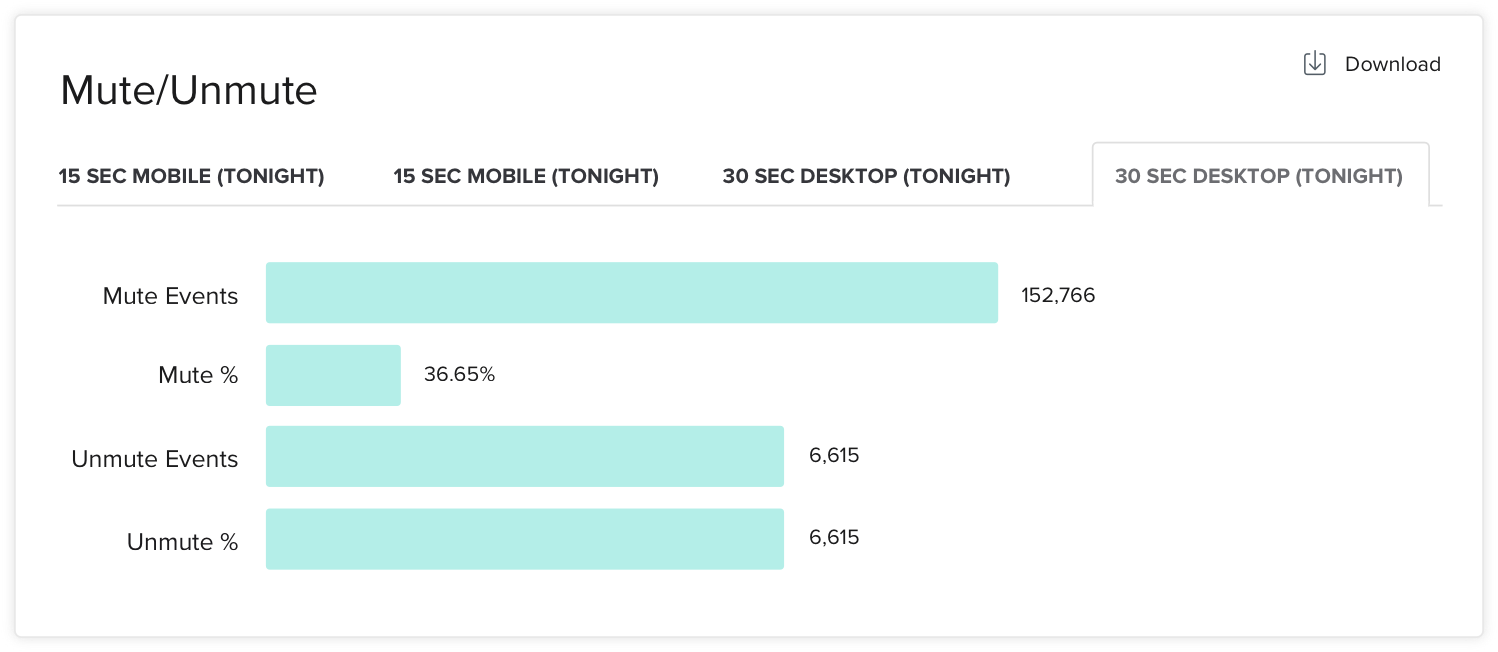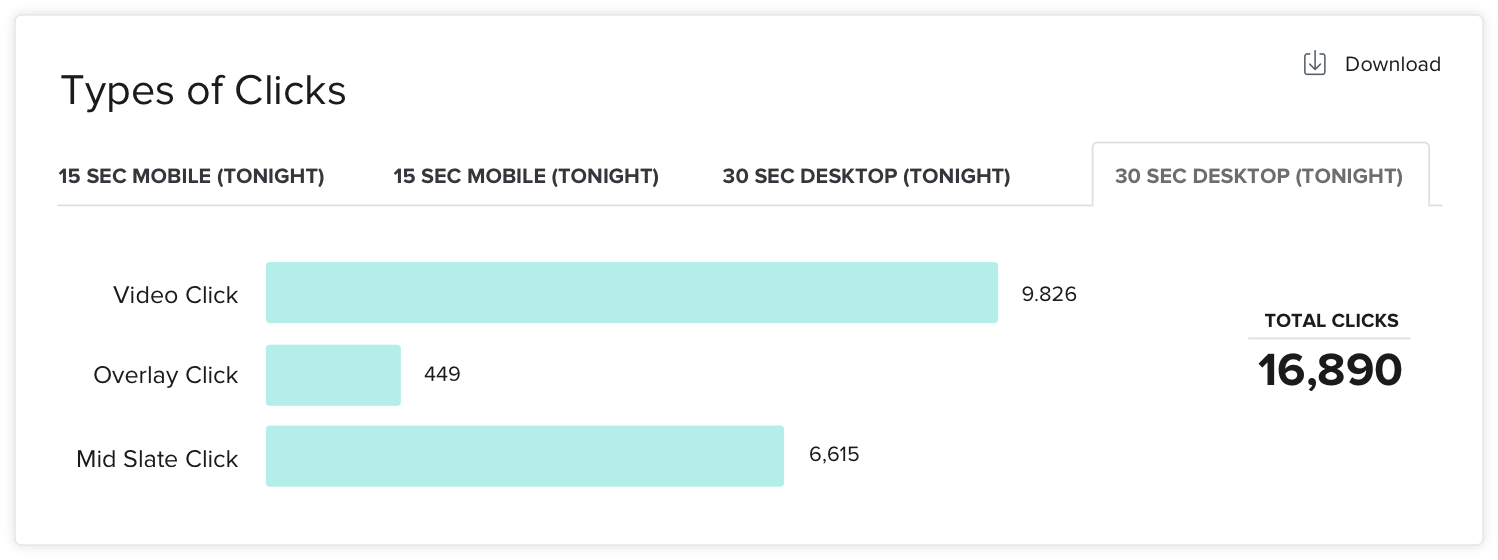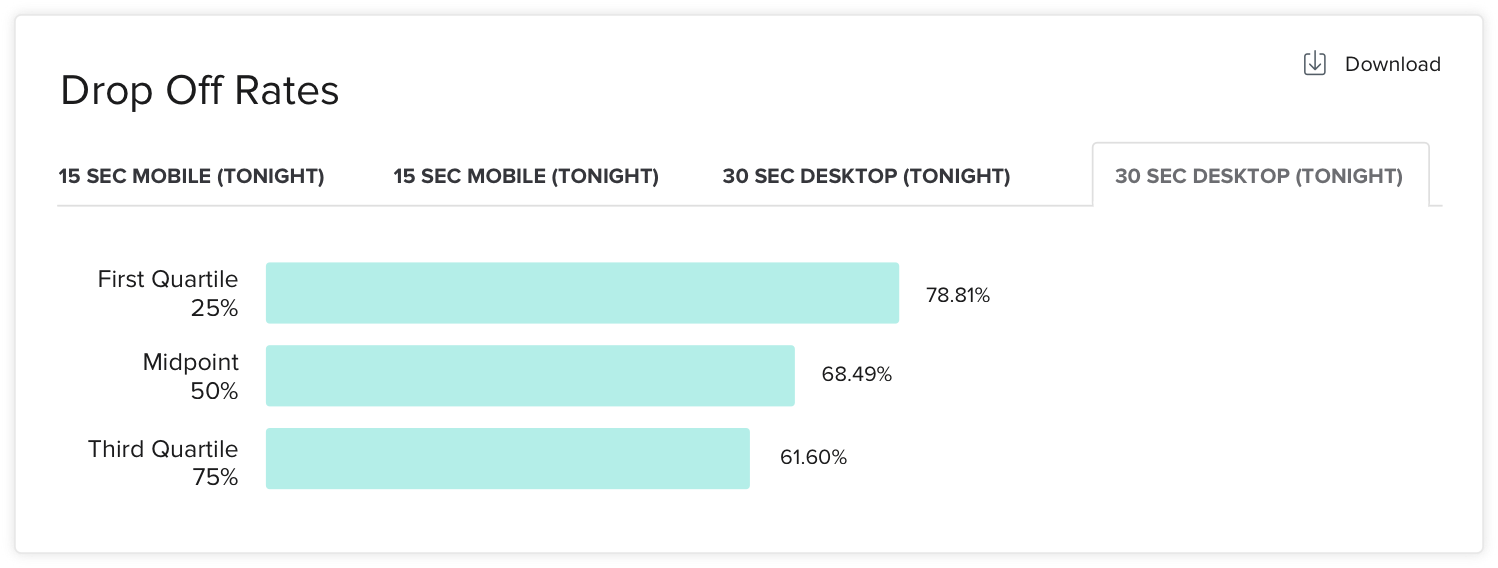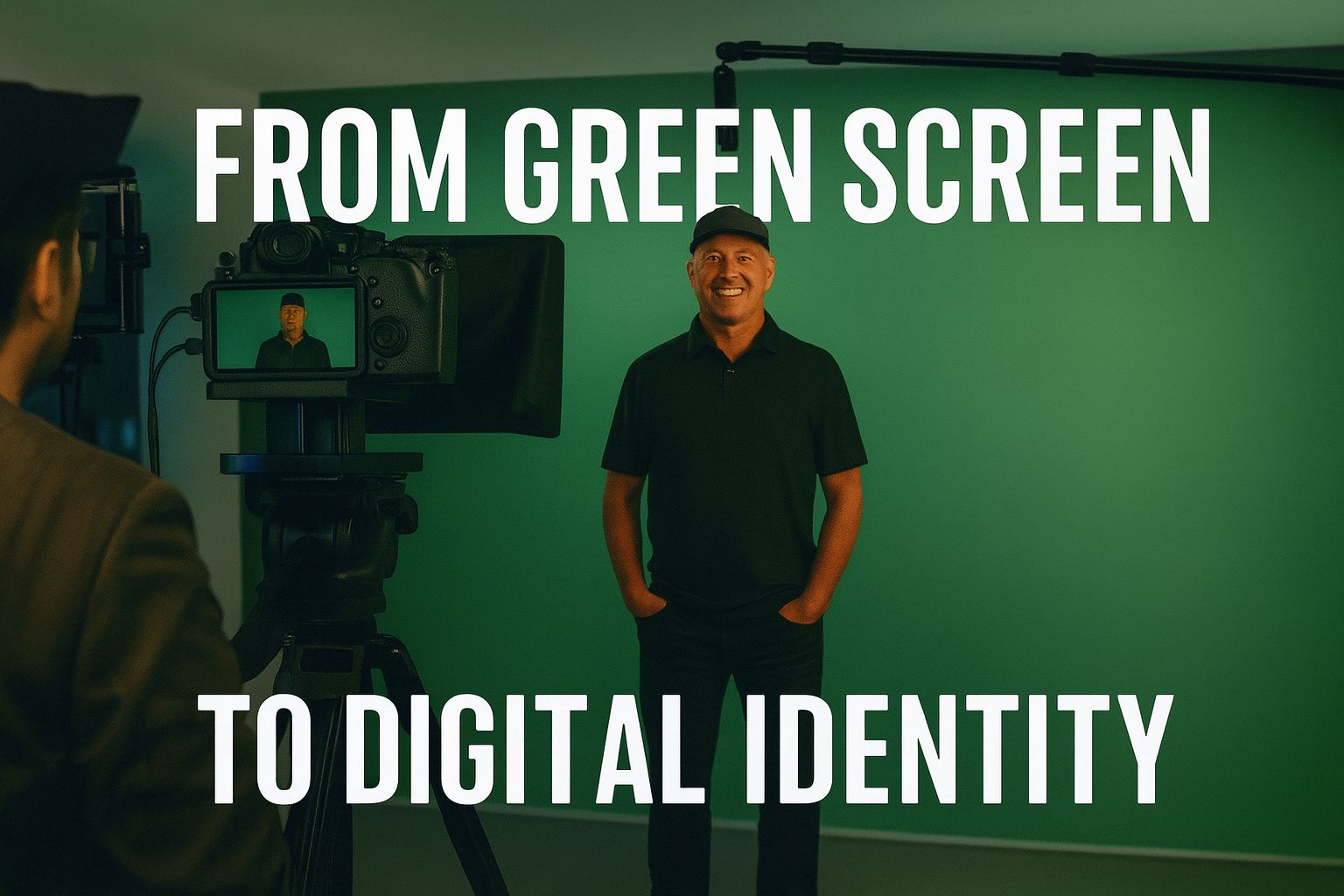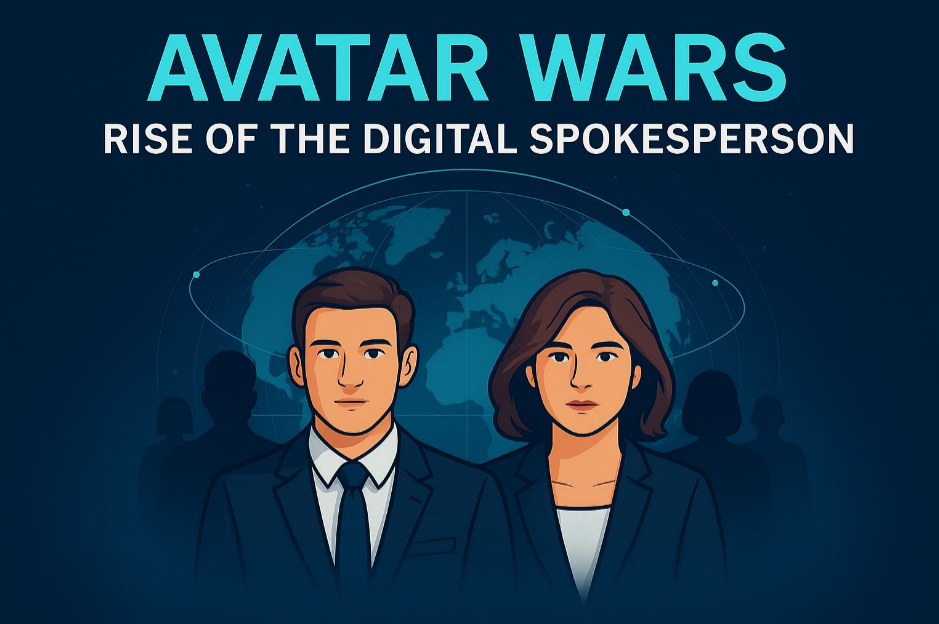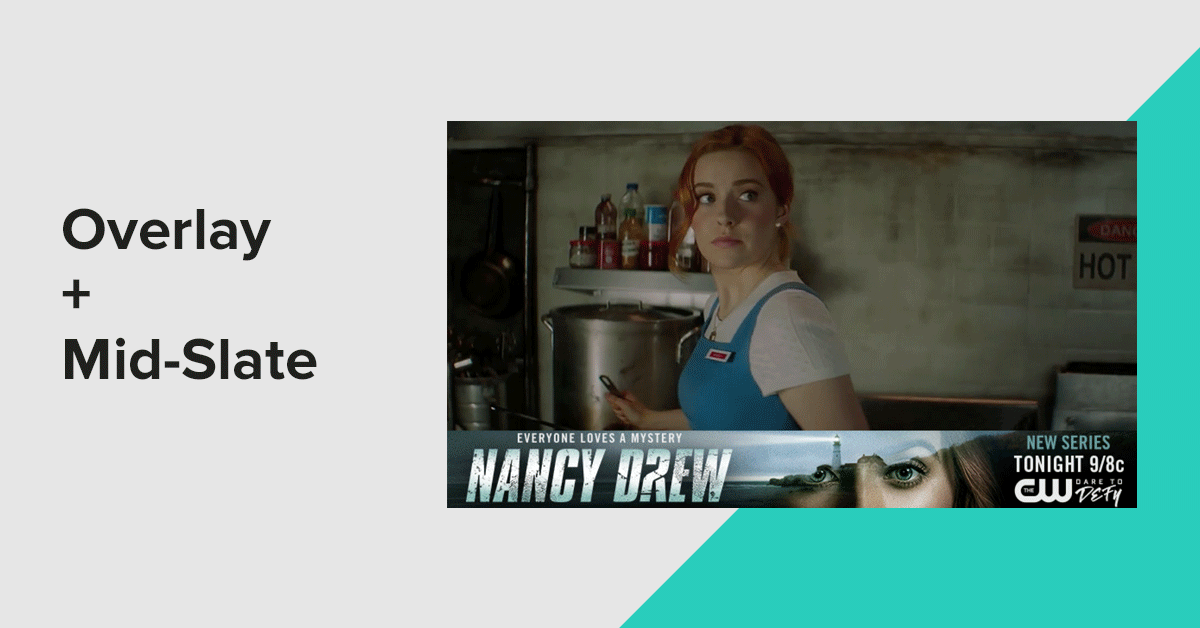
Digital Advertising and the Entertainment Industry: 2020 Trends – Innovate Media
Advertising and the entertainment industry are in a way, co-dependent. Movie studios rely on advertising to sell tickets and advertisers dream of their ads playing before a big feature film – the two industries rely on each other, so where one goes, the other must follow.
The world has gone more digital and on-the-go than ever before. Social media platforms are growing and tv streaming services are surpassing traditional tv’s relevancy. And as consumer viewing habits evolve into the digital sphere, the worlds of advertising and entertainment have had to make that switch as well.
Let’s take a look at why the entertainment industry is capitalizing on digital advertising trends.
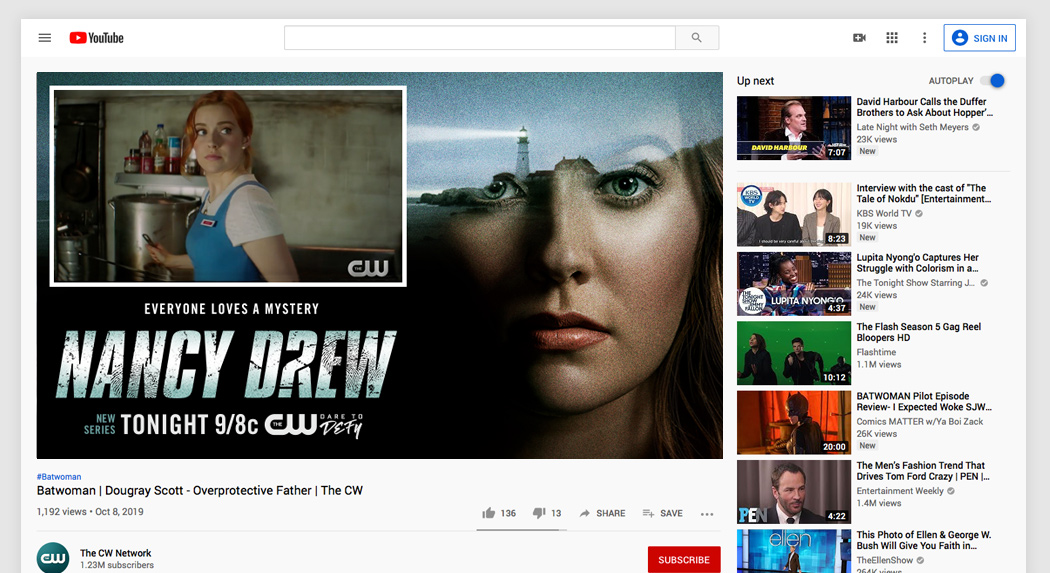
In short, there has been tremendous growth in the success of streaming services as well as within social media revenue. Revenues from television consumption via the internet and mobile has grown 18% since 2018. More impressively, social media is one of the fastest growing sectors of the digital world. Between 2013 and 2017, social media revenues had grown a whopping 37% annually. The market for capitalizing on social media users’ information and content has never been more enticing.
We’ve narrowed the benefits of the entertainment industry participating in digital advertising down to three ideals.
1. More Engagement
The world of social media opens up infinite doors for fan or potential-fan engagement. It’s quite simple to understand – billions of people are constantly spending billions of minutes of time on social media, giving the entertainment industry billions of opportunities to engage consumers and reel them into watching their content whether that be a tv show or blockbuster film.
A study by Unruly revealed that 31% of people who watch a movie promo will buy a ticket to see it, but those who share the promo with others via social media are 6 times more likely to get a ticket.
But the entertainment industry can benefit more from social media usage ads than just ticket sales. They can also use social media to interact, keep, and engage their existing fans, while creating a big enough splash to get the attention of other potential-fans by creating interactive trends. For example, the reality tv show American Idol integrated a social media strategy that encouraged its audience to talk about the show on social media – the show creates its own social media content and asks the audience to like and share the posts with the promise that once the post gets to a certain number of likes, the audience will be able to unlock exclusive show-related content. Another example is reality tv show, The Bachelor, which dominates Twitter with a plethora of different show-related hashtags that get people talking. The show also creates its own memes to target the younger generation, which does great things for fan engagement rates.
2. Deeper Market Segmentation
With new digital advancements, advertisers are able to look deeper into their audiences. They can now track how their audience watches media (streaming vs. traditional tv, mobile vs. home television). This is important because different generations watch content on different platforms and have different expectations for their watching experience. For instance, younger generations prefer watching short trailers, videos, and media on their mobile devices while older generations prefer watching longer form media on laptops or desktops.
This information can directly affect the length, style, and pace of trailers being presented by the industry. From this, entertainment industries can decide whether they’re going to serve promos and trailers that fit the mobile screen, apps, and sites, or if they’re going to serve their content on portals that allow for a slower paced viewing experience.
3. Better Targeting and Consequential, Retargeting
More entertainment companies are starting to use the insights gathered from consumers’ digital activity in order to improve the accuracy of their media buying efforts. Digital marketing in the entertainment industry is proficient in collecting and interpreting data so that entertainment companies can make the best decisions for their marketing strategy. Similar to any other type of advertiser, entertainment companies can gather so much valuable information about their audience through social media and streaming services, as user profiles are usually extremely revealing to who the user exactly is, in terms of location, interests, needs, and habits.
Since digital advertising provides real-time data for ads, entertainment companies also benefit from retargeting. In some cases, data may show results that completely differ from the initial goals and assumptions about the audience, which prompts a needed alteration to the marketing strategy. For example, Andre Fonesca, the VP of Digital Marketing at The Walt Disney Company shared that the initial fan base of the original animated “Jungle Book” was women aged 55 and up. However, once they released the live-action trailer, data suggested the new fan base consisted of men aged 18-30. Therefore, they retargeted their campaign to focus on this demographic.
By keeping a close eye on marketing metrics for a campaign, entertainment companies can now discover trends that will have a strong impact on their sales before it’s too late.
Now that we understand why the entertainment industry is interested in digital marketing strategies, let’s discuss the possibilities of what entertainment ads could actually look like on a digital screen.
Instead of a standard trailer for a movie or TV show, the use of emerging video formats is playing a big role in entertainment ads specifically for CTV. End cards, overlays, and custom skins are some of the new formats being used for movies and TV shows. The emerging video formats allow the consumer to interact with the advertisement directly from their remote (i.e. finding movie times, purchasing tickets, show schedules, watching the full trailer).
This works by utilizing pre-roll. The pre-roll ad automatically plays before a featured video on both computers and mobile devices. Like traditional radio or TV commercials, this type of ad is short, typically lasting 15, 30, or 60 seconds in length. Here, agencies can either re-purpose their television commercials or create specific video content. To enhance this ad, emerging video formats look for ways to directly connect the viewer with the message. When done properly, pre-roll (connected with various graphics and engagement options) gets attention, increases view through and click through rates. Here are our top performing formats:
Custom Skin
One way that has proven to increase VTR is the use of custom skins. Custom skins work like this: after a few seconds of a pre-roll ad playing, the video will shrink to the top corner and continue to play, but the custom skin will then provide more information about the show such as graphics, show schedules, and/or interactive options.
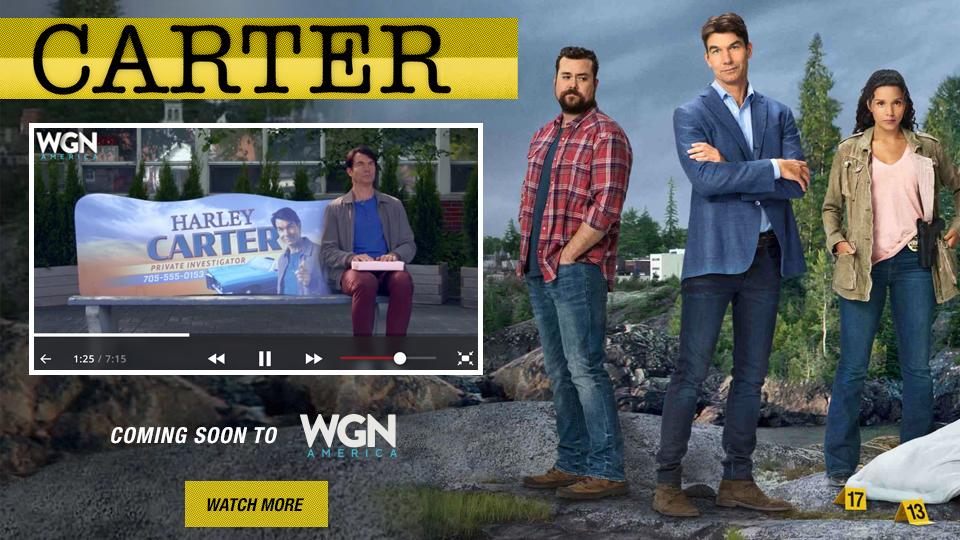
End Card
Another emerging format we use proficiently is the end slate that is placed at the end of pre-roll ads. Essentially, an end card is a form of a custom skin that occurs at the end of the ad to keep viewers on the ad longer than the pre-roll actually lasts. It gives viewers the option to look through movie times/dates as well as purchasing movie tickets right there within the ad. A few clicks and an email address is all it takes to get your movie tickets on your phone and ready for the theater. By using new tactics such as emerging formats, advertisers are seeing an increase in view through rate and click through rate.
One example of an interactive option Innovate Media has personally used is a “Meet the Characters” feature. While the pre-roll was playing at the top viewers were able to click through the characters and learn more about a particular television show or movie. Without these new tactics viewers tend to lose interest and skip through advertisements. Consumers are more likely to watch the entire ad with emerging formats rather than standard pre-roll.
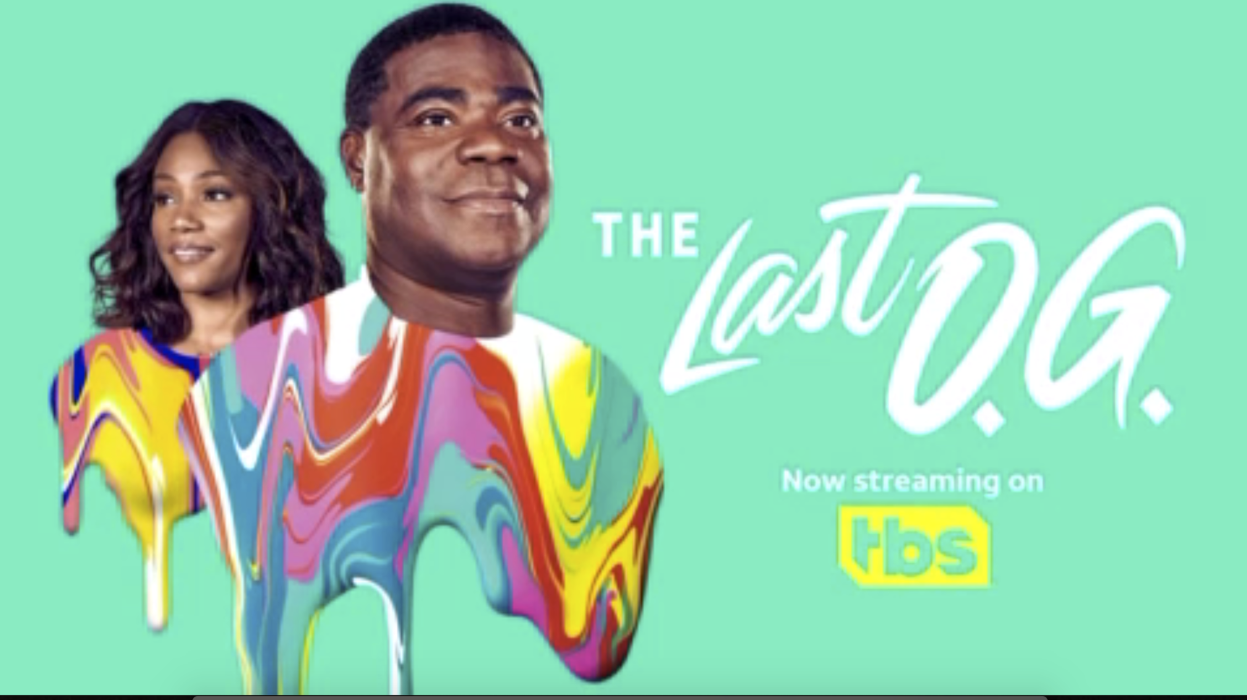
Overlay
Lastly, Innovate utilizes overlay, which is a bit more subtle than the two aforementioned formats. The overlay runs on top of the pre-roll, showing information such as the name of the show, the network, and show times. This allows for viewer interaction without taking too much away from the pre-roll ad.

Our team at Innovate Media knows first hand that these digital advertising formats work with the entertainment industry. Why? Because we’ve done it ourselves. Pulling from a campaign we did for The CW Television Network for their new show Nancy Drew, we have put together a case study so that you can see the incredible results for yourself.
With the Nancy Drew campaign we wanted to show how our ads perform better than just regular pre-roll ads. We were given repurposed Nancy Drew commercials that were playing on TV and added an overlay and custom skin. During the run of the campaign, we found that our results matched our hypothesis: emerging formats provide superior results because it invites viewers to move beyond passive watching. When engaged, viewers want to experience, rather than simply endure, the message.
Creating the Ads
Our team took the creative reigns in transforming simple pre-roll into a fresh and engaging custom skin and overlay. The overlay ran on top of the pre-roll, showing information such as the name of the show, the network, and show times. Then, after a few seconds of the pre-roll ad playing, the video shrunk to the top corner and continued to play to reveal the custom skin that provided more information about the show such as graphics, show schedules, and even interactive options. By the end, we had successfully created graphics that aligned with the mysterious and eerie themes of the show.
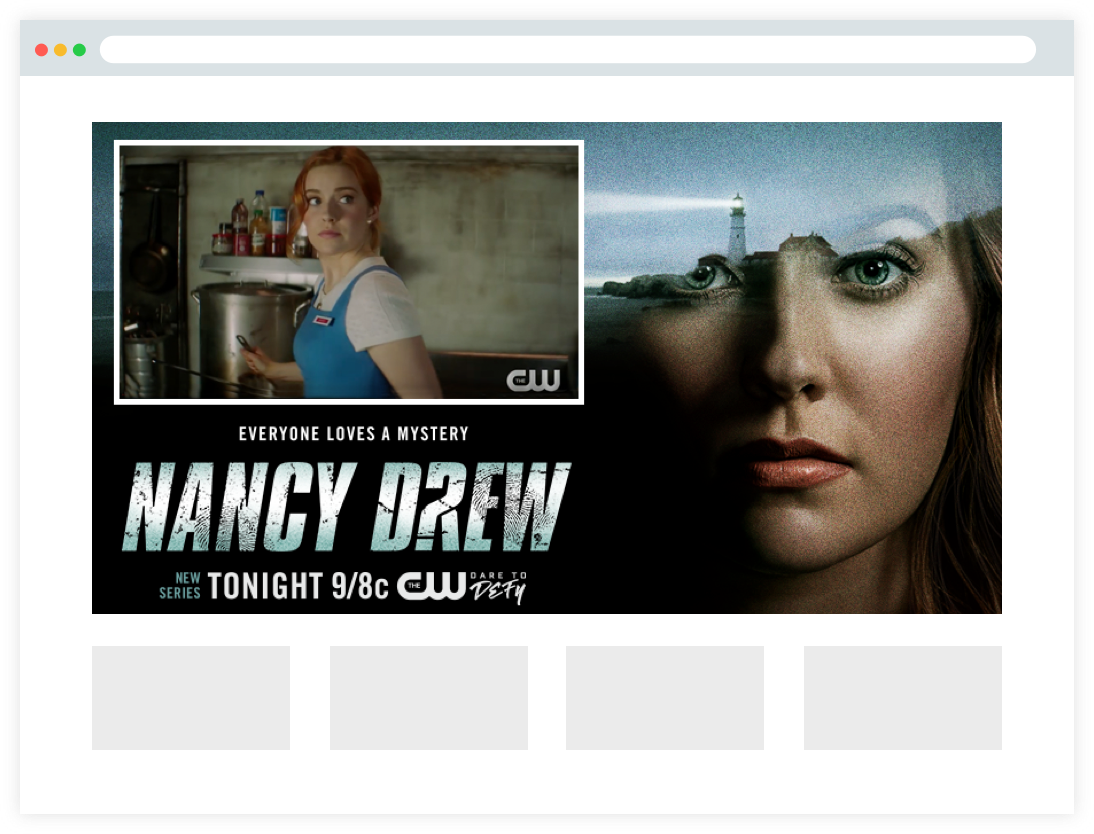
Targeting
Originally, the CW network’s programming lineup was intended to appeal mainly to women between the ages of 18 and 34, although starting in 2011, the network increased in programming that appeals to men. As of August 2017, the CW’s audience is 50% male and 50% female. So we decided to target adults (men & women) ages 18-38, as well as past viewers of other CW shows.

A/B Testing
We wanted to show The CW why Innovate Media was the right choice for their campaign. We ran our two seperate advertisements: one straight pre-roll ad and one pre-roll ad with our dynamic custom skin and overlay. We tested these on both mobile and desktop.
The results were astounding! We learned that 30 sec video advertisements do better with click through rate and 15 sec video advertisements are better for view through rate. On top of this we saw that Innovate Media’s emerging format advertisements performed a lot higher than just the

Data
Innovate Media tracks all types of data through its ads. On Nancy Drew we were able to track what types of clicks people were drawn to, such as clicking the banner overlay or the custom skin or just clicking the video. There was also a mute button option, this gives viewers the chance to watch the video with sound off, which normally wouldn’t benefit an ad because you’re not listening to the information, but with Innovate Media’s emerging formats the important information is always on the screen for the viewer to read. This actually encourages view through and clicks. Another cool aspect of our data is that we can actually see the drop off rates for when a viewer gets bored and stops viewing the video. This helps Innovate Media and the brand we are working with to see what needs to be improved and why consumers may not be interested.
Here were those results
